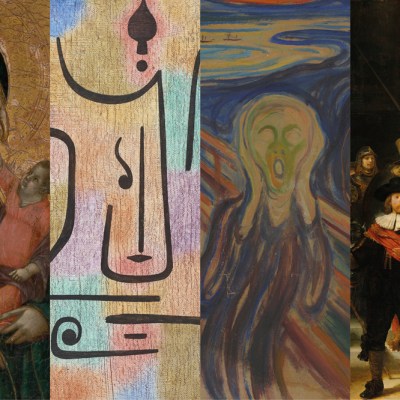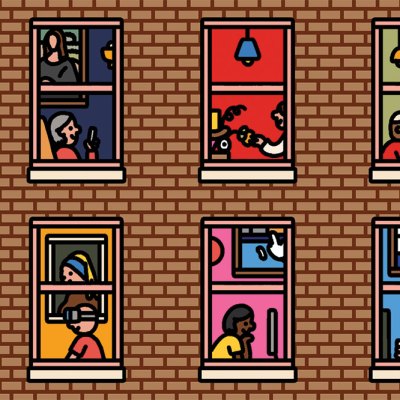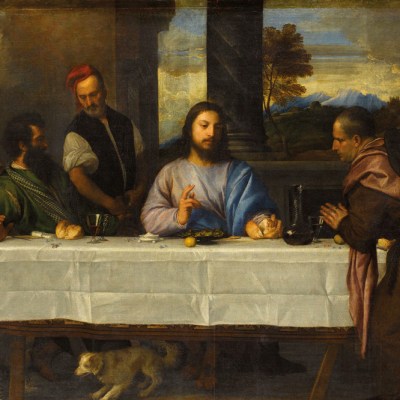Headlines about internet bots tend to bring to mind dark visions of our online spaces being infiltrated with fake news, spam or some other murky form of fraudulent activity. But might there be benevolent bots out there, too? The engineer and coder Andrei Taraschuk certainly thinks so. He presides over a network of nearly 500 ‘fan’ bots for artists and museums. Bots first became a general talking point soon after the US election in 2016, after being identified as the agents of foreign interference and online disinformation campaigns. Twitter has since cracked down on fake accounts although, like many tech scapegoats, bots are neutral agents with the potential to be manipulated. What bots do offer is a useful way to automatically post information updates, real or fake, at a rate humans can’t keep up with. In the more optimistic age of the early 2010s, accounts such as @everyword, @deepquestionbot and @tinycarebot were celebrated examples of creative programming and actively encouraged by Twitter’s open source ethos.
Taraschuk lives in Colorado but was born in Russia. He’s the first to laugh off any nervousness about his motherland and the internet’s more villainous actors. His network has a combined follower count of 10.25m and has shared some 4.5m artworks online to the tune of more than 51m likes, the unexpected outcome of a small side project Taraschuk started in 2013 to promote his sister’s artistic practice and sprinkle more art into his life via his Twitter feed.
Taraschuk has seen a sharp rise in followers since the start of the pandemic, particularly for the American realist Edward Hopper, whose paintings deal in modernity and isolation. Unsurprisingly, Impressionists and post-Impressionists fare well online, with Monet racking up an enviable 54.8k followers and van Gogh not far behind with 48.1k. Ever trendy moderns like Klimt (24.6k), Schiele (21.4k) and Dalí (22.6k) are also predictably popular. Among the artists with comparatively few followers are O’Keefe (6k), Modigliani (6k), Duchamp (8k), Warhol (9k) and many of the Old Masters, including Velázquez (5k), Hogarth (4k), Rubens (8k) and Titian (6k).
Which artist or museum gets a fan account depends in part on whether enough digitised works from verified sources are freely available online. Inevitably, then, the network replicates some real-world cultural hierarchies. ‘Availability of artworks for some artists is limited’ but, Taraschuk tells me, he sometimes makes the bot anyway. ‘It’s still important to represent minority and women artists.’ Another coder producing bots in his spare time, John Emerson, makes museum bots alongside ‘advocacy’ bots, such as one that flags Wikipedia edits made by the New York Police Department. He has dedicated one account to Japanese woodblock prints, and has gone out of his way to scrape data from websites of non-Western institutions, such as the National Museum of China. Other efforts by Twitter users include @queerartbot and @SovietArtBot, whose handles are self-explanatory.
Sceptics might argue that these projects add to a glut of information on social media, which, as it proliferates, is increasingly overwhelming and unintelligible. Social media does, however, offer a refreshing element of serendipity to how we encounter art. Unconstricted by wall space, too, it can eventually show an entire collection, free of charge and to audiences of any size. ‘Museums are limited by attention span, people can only visit so many times a year,’ Emerson explains over Zoom. ‘On Twitter, people’s attention returns over and over, so it’s nice to bring the art to where people are, physically and in terms of time.’
The art world may disagree. The random generation of decontextualised art, free of grander art-historical narratives, disrupts what we have come to understand as a traditional museum’s curatorial mission. ‘My goal is not to replace the museum experience – seeing art in real life – but create new opportunities for education and exposure,’ Taraschuk assures us. Accounts like @boschbot by IT consultant Nig Thomas, which posts slithers of The Garden of Earthly Delights, evince how the internet can offer a new, complementary experience to in-person viewing. Liberated from the work’s overawing scope, the viewer can acquaint themselves one detail at a time.
Taraschuk, who has recently co-founded a small team with data scientist Cody Braun, would prefer to work on his network of bots full-time if he could monetise it. Nonetheless, he has gone ahead with plans to invent a smart recommendation system. ‘Most people’s journey into the world of art starts with something familiar, like Monet’s water lilies. But we’re trying not to fall into a trap of sharing only content that people know, instead using the data to expand their art world view,’ he says. If the data shows that sharing Monet’s water lilies at 2pm on a Friday gets a lot of engagement, the time slot might be used to promote a lesser-known work, or a lesser-known artist of the same style.
In recent months Taraschuk’s team has rolled out a new machine-learning algorithm that uses visual similarity matrices to compare artworks on the basis of their compositions and colour palettes. The hope is to introduce followers to works like those they already favour, and the team are still adjusting the right balance of similarity and difference to both surprise and please their users. On 21 January, @ArtistHockney tweeted the mammoth A Bigger Grand Canyon (1998), replying to itself shortly after with an image of Russian painter Nicholas Roerich’s Battle of Kerzhenets (1911), which it notes has a similar colour scheme.
As with everything we do online, how we engage with art is a series of data points ripe for analysis. If successful, projects like Taraschuk’s might unearth all manner of ahistorical and acultural links that elude traditional art history. How to categorise and connect artists and artworks could be reconsidered, with the tools offering a new way to understand our tastes and art’s more intangible charms. For now the algorithms remain in their infancy, their potential uses, or abuses, constrained by the limits of our imagination.


